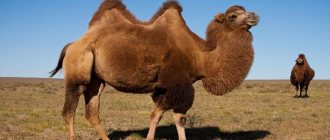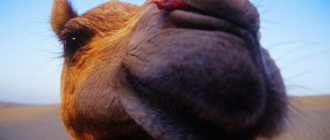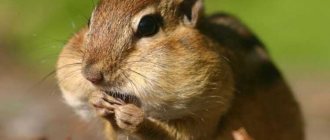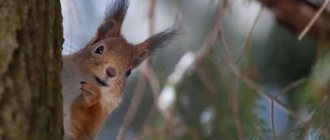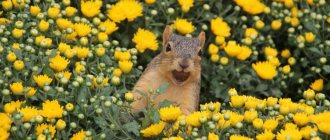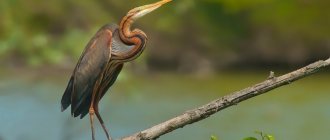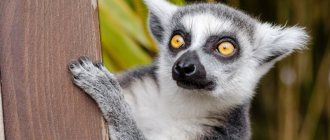Few people have heard of such wonderful creatures as wombats, and if they have, they can hardly imagine what they look like. And in vain! These unique animals are able to bring a smile and an outpouring of tenderness to even the most indifferent people to animals.
After the first acquaintance with wombats, the thought almost immediately pops up in my head - shouldn’t I have a similar charm at home? However, no matter how much you would like to, in any case you need to take into account several pitfalls and just get to know these animals better.
Keeping a wombat at home
First of all, we must remember that the wombat is a very capricious creature, because it biologically needs to equip itself with a home underground, digging holes and pits. Of course, a wombat will not be at all concerned about the safety of a newly purchased sofa or an old family rug - if it seems to him that he needs to make himself a new home, then nothing will stop him.
Of course, the most logical option here seems to be transporting a potential pet to the country or out of town. But this is only half the problem - a wombat can get carried away with searching for a suitable place for a hole and go out onto the roadway, where there is every risk of being crushed under the wheels of a car.
We also must not forget that the homeland of these beautiful creatures is Australia, whose climate is constantly dry and hot. Therefore, you need to take into account the climate of the area in which it can become a potential pet. It is no secret that animals, in whose habitat there is always an abundance of sun and warmth, are completely unsuitable for living in, for example, the cold of the northern part of Russia.
The wombat's diet mainly includes herbs, plant roots, berries, mushrooms, some vegetables and fruits that pets are treated to - carrots, zucchini, apples. As you can see, these cute animals are not at all picky about food, in other words, they are ready to feast on everything that their caring owner treats them to.
Thus, it is not difficult to conclude that a domestic animal such as a wombat will constantly need care, care and attention due to its origin and climatic predispositions.
Nutrition
Marsupials have a slow metabolism; any food can be digested for up to 2 weeks.
Among mammals, the wombat is the most economical in terms of water consumption. Per 1 kg of weight - only 22 ml. The unique ability of the animal allows it to survive during periods of drought and in the absence of food.
The animal has a good sense of smell; at night it searches for food, cutting the plant (root crop) at the root with sharp teeth.
The diet of adult rodents is very extensive:
- young shoots of plants;
- roots;
- mushrooms;
- some mosses;
- berries.
Appearance of wombats
Why do wombats give the impression of such cute and good-natured creatures? Seeing a wombat for the first time, an association with a beaver or a small bear cub will involuntarily pop up in your head, at the same time cute and charming, like cats or raccoons.
Wombats weigh from 25 to 40 kilograms and their height is 70-120 centimeters. As already said, these animals are big fans of digging holes and digging tunnels, for which nature gave them short, but strong and massive paws, and long claws. Wombats have a flattened muzzle, their eyes are dark, small and squinted. Many people find similarities with rodents in wombats, and this is no coincidence - these Australian mole rats have a short tail and elongated teeth hidden behind plump lips.
Types of wombats
Unfortunately, today wombats are considered an endangered species, and zoos are currently helping to save their populations.
One of the reasons for the extinction is the recent particularly frequent natural fires in Australia.
Modern zoologists distinguish three types of wombats - Long-haired (the most popular as pets), Short-haired and Kwislensky.
Previously, there were significantly more species, but, as already mentioned, extinction and climate change have called the existence of these cute animals into question.
Biologically, they are similar to koalas, as they have a common historical ancestor that existed more than 36 million years ago.
Where do wombats live?
Unique wombats inhabit eastern and southern Australia. They can often be found in South Wales, as well as in South Australia, Queensland and Tasmania.
The animals spend most of their lives in burrows. Therefore, wherever they live, they need loose soil to dig tunnels up to 3 m deep. Complex burrows with numerous caves can be up to 2 m long.
Rodents love solitude, but their burrows are often located close to each other.
Note!
- Removal and cremation of animals
Cynologists - who are they?
Car soundproofing. What is she like?
At sunset, the animal leaves its hole to feed. Only in winter, when there is little heat, can a wombat leave its shelter during the day. The animal loves to bask in the sun, but can hardly tolerate the cold.
The rodent marks its territory by leaving its feces on stones and trunks of fallen trees. The animal's markings with the smell of sweets scare away competitors.
Reference! Wombat feces serve as the basis for the production of all types of paper in Australia.
Life of wombats in their natural habitat
In their natural habitat, wombats do not have such an abundance of enemies as do mink rodents on other continents. In Australia, the only threats to wombats are Tasmanian devils and dingoes. But even against such seemingly dangerous rivals, wombats, over the course of evolution, came up with cunning and sophisticated counter strategies.
For example, as already mentioned, wombats live in burrows, where ill-wishers may want to climb into in search of food. In this case, the wombat blocks the entrance to the hole with the back of its body, which can withstand bites and blows thanks to strong bones and fat folds.
If the enemy does not retreat in this situation, the wombat moves a little and allows him to stick his nose a little deeper into the hole, after which he rises sharply and presses the enemy, depriving him of the opportunity to breathe.
However, if even such sophisticated techniques do not help in the fight for life, the animal begins to violently rush and bite or simply run away, reaching speeds of up to 40 kilometers per hour. These facts are worth taking into account, since at first, as a pet, a wombat can see danger in everything unfamiliar, and everything will be unfamiliar to it.
In such a situation, the behavior of a wombat can be unpredictable, because it can run or hide, or it can take a fighting stance and even bite.
Unlike other animals, wombats do not have a specific mating season and reproduce throughout the year. It is especially noteworthy that in these animals it is not the males, but the females who initiate mating - the ladies simply come to visit the males in their bachelor holes. The female carries the cub for about three weeks. After birth, the little wombat is not yet adapted to life, so the mother, according to the good Australian tradition, carries it in her pouch for another 6-8 months.
It is noteworthy that the pouch of female wombats is located closer to the back of the body, and not in front, like in a kangaroo. Then the cub does not leave the mother for about a year and only after this period does it enter adulthood.
Features of character and lifestyle
Photo: Australian wombat
These clumsy creatures feed mainly at night and rest underground during the day. The sense of smell is of particular importance when choosing food for animals that are active in the dark part of the day. Their burrows provide them with refuge for predators and also protect them from extreme temperatures and dry conditions.
Wombats, having a low basal metabolic rate, along with the slow rate of passage of food through the intestines and the efficiency with which they digest food, spend less time feeding than other animals of their size, and they can afford to spend most of their time in their burrows . Their home ranges are small for herbivores of their size, typically less than 20 hectares.
Mammals dig by scratching the soil with their front paws, pushing the soil back. The marsupials then carry her out of the hole like bulldozers, backing away. The passages are huge, about 30 m or more. Each shelter has several entrances, side branches and rest chambers. The tunnels of the southern animal are especially complex; they are made over several generations.
The animals usually feed and live alone, but southern forms of marsupials with hairy noses can gather in small groups. Similarly, clusters are found in the burrows of the northern longhaired individual. A group can use one move system. However, even when two individuals use the same burrow, they occupy different parts of it.
There is evidence that both the female northern species and the female common wombat are more likely to leave their home burrow at some stage in their lives, while males are more housebound. This is unusual - in most mammals, males always leave the shelter. This may suggest that the groups of individuals that occupy refuge clusters in regions where the northern species lives are composed of related males and unrelated females.
Interesting Facts
The wombat was the pet of one of the most famous English writers - Lewis Carroll. The author of the famous book “Alice in Wonderland” lived with this cute animal since 1869. Wombats are the only animals in the world that defecate in cubes. And they find practical use for this - with these cubes they mark their territory and set the boundaries of their possessions.
Today, wombats are carefully protected by Australian law. They are sold only to the largest zoos, and their export outside the country is strictly prohibited.
You can learn even more about wombats from the video:


